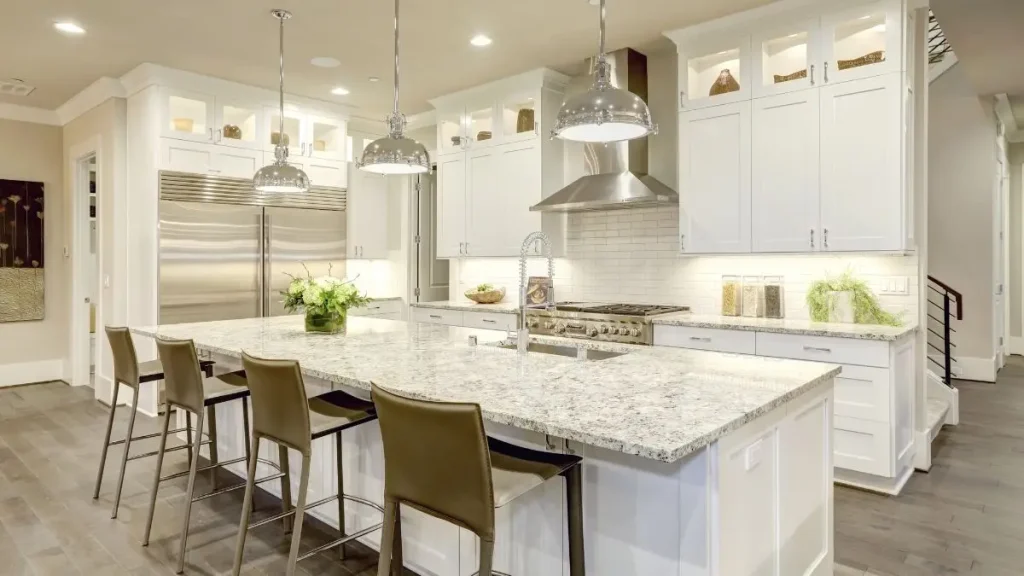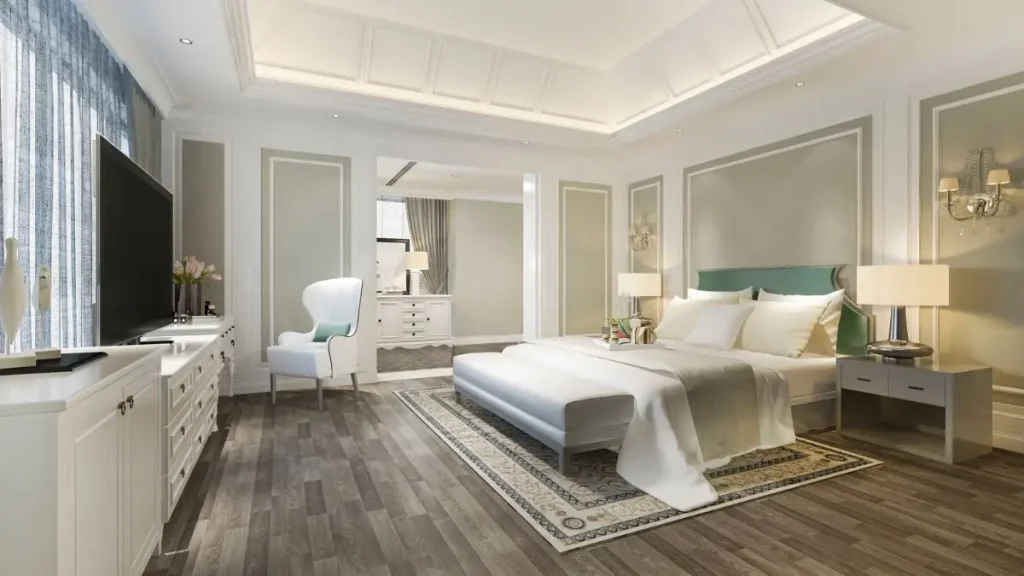Beverly Hills Modern Mansion Once Owned by Cary Grant Now for $77.5M
When I first saw the $77.5 million price tag, I had to stop and think—what kind of place justifies that number? Then I realized: this isn’t just a house. It’s Cary Grant’s final home. A hillside estate in Beverly Hills, tied to one of Hollywood’s most iconic leading men, now transformed into a modern fortress of luxury.
What makes this listing stand out isn’t just the address or the amenities. It’s the story. Grant bought this place in the 1940s for just $46,000—practically a different universe in today’s market. He lived here until he passed in 1986. That alone gives the property a kind of emotional weight most high-end listings just don’t have.
But here’s where it gets interesting: the house that’s up for sale today? It’s not the one Cary lived in. His widow, Barbara, and her husband David Jaynes razed the original home and spent six years rebuilding it almost from scratch.
What stands now is a 15,700-square-foot modern marvel, completed in 2023. It’s sleek. It’s enormous. And it’s got a view Grant himself never fully enjoyed—until now, everything was horizontal windows. Today, it’s floor-to-ceiling glass across nearly every room.
This isn’t just another celebrity mansion on the market. It’s old Hollywood history meets modern architectural ambition, all tucked behind gates above Benedict Canyon.
Would you pay $77.5 million to own that story?
Let me know in the comments. Would love to hear what you think this home is really worth—emotionally or financially.
A Hollywood Legend’s Final Sanctuary
It’s wild to think about, but Cary Grant—one of the smoothest, most iconic names in cinema—spent his final years tucked away in this very spot, high above Beverly Hills. And not in some flashy modern fortress, but in a modest 1940s-era home he bought for about $46,000.
According to The Wall Street Journal, Grant purchased the estate from the widow of his manager and business partner, Frank Vincent, sometime in the ‘40s. He lived there quietly until his death in 1986. No drama. No unnecessary spotlight. Just peace, privacy, and a killer view he mostly saw through small, horizontal windows.
That part stayed with me—the fact that Grant never fully experienced the full sweep of the landscape around him. It’s a reminder that even stars can live simply when they’re not on screen.
After his death, the property passed to his widow, Barbara Grant. Years later, she married real estate investor David Jaynes—and together, they made a bold decision: start over.
From Classic Charm to 2023’s Minimalist Marvel
I get it—you might feel a little conflicted knowing the original house was torn down. I did too at first. But when I saw what Barbara and David built in its place, I understood.
As Robb Report details, the home today is 95% rebuilt from the ground up and wasn’t finished until 2023. They spent six years crafting something timeless and intentional. What you get now is a 15,700-square-foot statement—seven bedrooms, 13 bathrooms, spread across three levels of ultra-clean design and warm, minimalist interiors.
Every material feels curated. Rift-sawn white oak floors underfoot. Soaring ceilings overhead. Every line is deliberate. Every space feels like it breathes.
And the views? Thanks to floor-to-ceiling glass, you can finally see what Grant might’ve missed. City lights. Ocean horizon. Sky stretching endlessly across LA.
Barbara even said it herself in Robb Report:
“Now everything is floor-to-ceiling, so you can really see the extraordinary views… breathtaking, particularly at night with all the little sparkling lights.”
It’s the kind of upgrade that doesn’t erase the past—it honors it by letting the property reach its full potential.
What $77.5M Actually Gets You—Inside and Out

Let’s be honest: when you hear $77.5 million, you want more than just square footage. You want to feel where that money’s going. And here? You can see it in every detail.
As noted by Realtor, the property features a 52-foot pool, lighted tennis court, and a series of cascading terraces built for serious entertaining. There’s a formal dining room. A sleek Bulthaup-designed kitchen with Gaggenau appliances—Barbara’s personal passion project, since she loves to cook.
The layout flows effortlessly. You walk into a dramatic foyer with a floating staircase and chandelier, and before you know it, you’re in a living room that opens directly to the gardens. These aren’t your typical overdone Beverly Hills gardens either—think white and cream-colored roses, carefully planted and perfectly framed.
It’s clear no inch of this estate was rushed. Everything, down to the original three-car garage and gated motor court, has been designed to blend utility with elegance.
That same emotional pull exists with legacy-driven estates—like Oprah Winfrey’s $150M property portfolio, where the real value lies in history and narrative, not just footprint.
A Home Built Around Experience, Not Just Appearances
Let me say this straight: a lot of luxury homes look great in photos but feel hollow when you dig deeper. That’s not the case here.
This place was built to live in, not just show off.
There’s a Dolby Atmos theater that David Jaynes went over-the-top on—and I mean that as a compliment. He had a professional company custom-design it with a 17-page spec sheet. “This better be better than one of the AMC 14 theaters,” he joked.
You’ve also got a 640-bottle wine room, an art studio, a full gym, and even a glam room. Not to mention a massage room and a study filled with “beautiful books,” as Barbara puts it.
I think that’s what really hits me—this isn’t a trophy property built by a developer looking to flip. It’s a home made by people who lived in it, cared about it, and wanted to get it just right.
I actually came across a few more celebrity homes recently that tell a similar story—if you’re into rare properties with personal detail, there’s been some great chatter in one of the WhatsApp real estate groups I follow. The updates there are often faster than what makes headlines.
Why Let It Go Now? A Bittersweet Goodbye
You might be wondering: if it’s so perfect, why sell?
The answer’s simple—and a little sad. Barbara and David are downsizing. She’s in her mid-70s now, and while she still loves the home, she’s ready for something smaller, quieter.
“It doesn’t mean I won’t miss the house,” Barbara told the press. “But I’m happy to move to a smaller place.”
That one line says a lot. This isn’t a financial flip. It’s not a flashy Hollywood deal. It’s a genuine, human moment. A couple stepping away from something they built with love, just because it’s time.
And for whoever buys it next—this isn’t just square footage or city views. It’s a chapter in a real story.
This reminds me of how Ken Griffin’s $1.5 billion real estate holdings reshaped expectations in luxury buying—when timing and legacy meet, the price often follows.
What Today’s Luxury Buyers Actually Want—And How This Delivers
If you’re in the market for a $70M+ home, you’re not just buying bricks and marble. You’re buying ease, privacy, character, and a layout that doesn’t waste your time—or your view.
This estate nails that.
Modern luxury buyers want seamless indoor-outdoor living, high ceilings, and natural light in every corner. They want that feeling of calm as soon as the gate closes behind them.
You get that here—and more.
The floor-to-ceiling glass, open-concept living, and intentional landscaping create a retreat that doesn’t feel like a showroom. It feels livable. And rare.
Compare that to many new builds in Beverly Hills, where everything feels copied and paste. This home? It’s not selling excess. It’s selling peace with pedigree.
And if you’re someone who values legacy, the Cary Grant connection gives this home something almost no new construction can: story.
And unlike properties that bounce around the market like Dan Snyder’s Maryland mansion, this one was never meant to be a flip—it was built to last.
The Timing Behind the $77.5M Price Tag

Here’s something most articles don’t dive into: why now?
From what I’ve gathered, it’s not a financial play. It’s about life stage. Barbara is in her seventies, and the home is just too big. Downsizing at that level doesn’t mean compromise—it means resetting priorities.
But the timing isn’t just personal. It’s market-smart, too.
According to listings, Beverly Hills is seeing a fresh wave of ultra-luxury sales in 2025. Buyers from the U.S., Middle East, and Asia are scooping up properties with real emotional or historical value—not just flashy finishes.
This estate hits that sweet spot: brand-new construction with a classic Hollywood backstory.
If you’re a high-net-worth buyer looking to place capital in something that holds cultural and architectural value, this isn’t a bad bet.
What Sets This Estate Apart From Everything Else on the Market?
Let’s break it down—because not all $77 million homes are built equal.
Here’s what makes this one stand out:
- It’s personal. It wasn’t built by a developer chasing ROI. It was built by a couple who actually lived there and wanted it done right.
- It has soul. Between the study, the theater, the garden, and the kitchen Barbara designed herself, this isn’t some cold mega-mansion.
- It has history. Cary Grant lived on this land. That alone makes it a collectible.
- It has warmth. The interiors aren’t sterile. They’re grounded. Calm. Functional.
- It’s one-of-a-kind. You can copy a floor plan. You can’t copy vibe.
I’ve seen dozens of high-end listings that look good on paper but feel empty. This one? It feels lived-in—but polished.
The Hollywood Legacy Buyers Still Want to Own
Let’s be honest—you can’t talk about this estate without talking about Cary Grant.
He wasn’t just a movie star. He was the movie star. Suave. Private. Discreet. And this home reflects that part of him.
It’s not flashy on the outside. No neon gates. No rooftop helipad. Just a long gated drive, a quiet motor court, and a house that rises up subtly behind the trees.
This is where he lived. Where he retreated from the chaos of fame.
And even though the structure is new, the essence of the land, the privacy, and the intention—that’s still very much alive.
Buyers today still chase these legacy homes. Whether it’s Brad Pitt’s real estate empire or Mariah Carey’s lavish rental, the common thread is story. And Grant’s story still resonates.
Want more behind-the-scenes stories of luxury estates and celebrity homes? Explore more iconic properties on our website Build Like New.
Disclaimer: This article is based on publicly available real estate listings and media reports. Prices, features, and ownership details are subject to change. We do not represent the seller, agents, or any affiliated parties.


